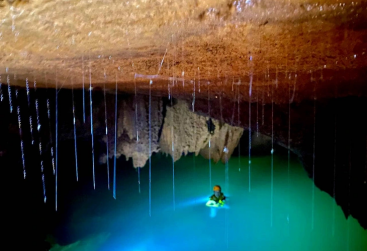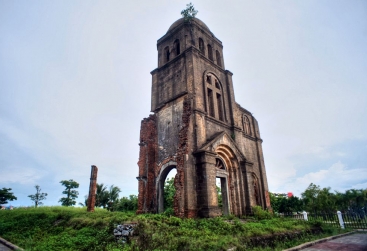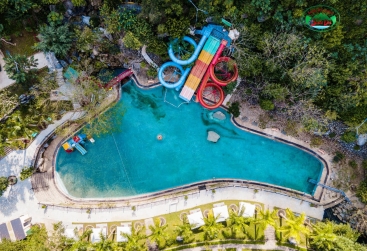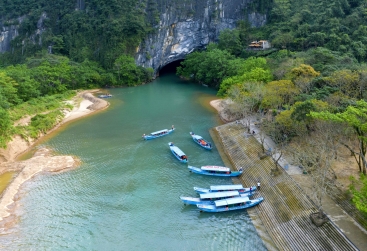A DMZ tour stands for "demilitarized zone," which is a temporary military demarcation zone. In Vietnam, the 17th Parallel along the Ben Hai River was selected as the latitude line separating North and South Vietnam after the Geneva Agreement was signed on July 20, 1954. Quang Tri is the first locality in Vietnam to utilize the DMZ tourism model. DMZ is an acronym that stands for Demilitarized Zone, which is also referred to as a temporary military border zone. DMZ tours are popular with tourists around the world, particularly international tourists.
Quang Tri used to be a significant military base during wars, but now it houses a vast collection of historical relics. DMZ tours have become the province's most famous tourist attraction. Anyone who visits Quang Tri wants to experience this unique form of tourism. DMZ Quang Tri tour has considerable historical and cultural value, enabling visitors to learn more about a remarkable era in Vietnamese history.
Ta Con Airport
Ta Con Airport is a historical site located in Hoa Thanh Village, Tan Hop Commune, Huong Hoa District, Quang Tri Province. It is situated more than 400 meters northeast of Ho Chi Minh Road, which is the section that connects Khe Sanh and Huong Lap, and 3 kilometers north of Khe Sanh town. During the Vietnam War, between 1966 and 1968, Ta Con Airport served as an aviation bridgehead in a cluster of strategic military bases used by the US army, and was an important link of the Khe Sanh base group. At that time, the Liberation Army of South Vietnam conducted the Khe Sanh Liberation Campaign in order to open a supply route from the North to the South. The site was recognized nationally by the Ministry of Culture and Sports in Decision No. 236/QD-BVHTT dated December 12, 1986 and has since become a historical relic worth visiting.
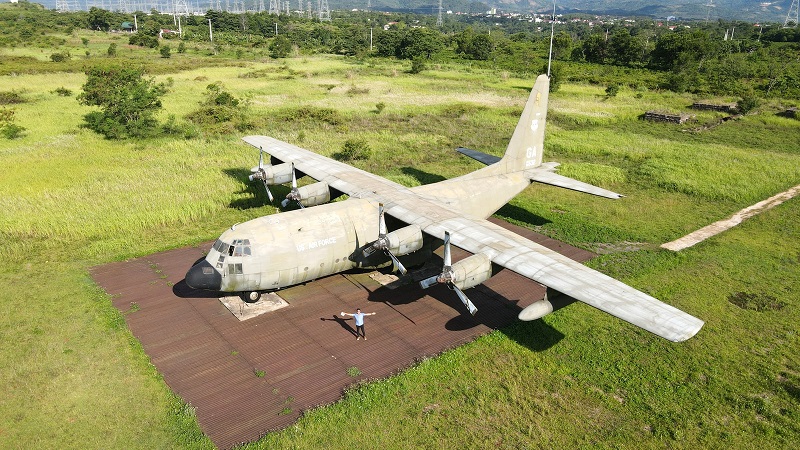
Ta Con Airport Relics is a popular tourist attraction in the "DMZ Tour - Revisiting the Old Battlefield" during the Vietnam War. The site features a museum and exhibits that showcase war equipment like airplanes, helicopters, and tanks. It's a great place to learn about the history of the war and to see these relics up close.
Dakrong Bridge
Dakrong Bridge is a bridge spanning the Dakrong River on the Ho Chi Minh route in Dakrong Commune, Dakrong District, Quang Tri Province. The bridge is located in the Dakrong relic - scenic area. This is the starting point of Highway 14 connecting from Quang Tri to Binh Phuoc.
During the war, Dakrong bridge served as a vital transportation route for the southern battlefield. Originally, it was an iron bridge. However, after the war, with the help of Cuba, a new suspension bridge was built to replace the old one. It was 100 meters long and 6 meters wide. Unfortunately, the suspension bridge collapsed in 1999. Consequently, the government took initiative to build a new cable-stayed bridge, which stands today.
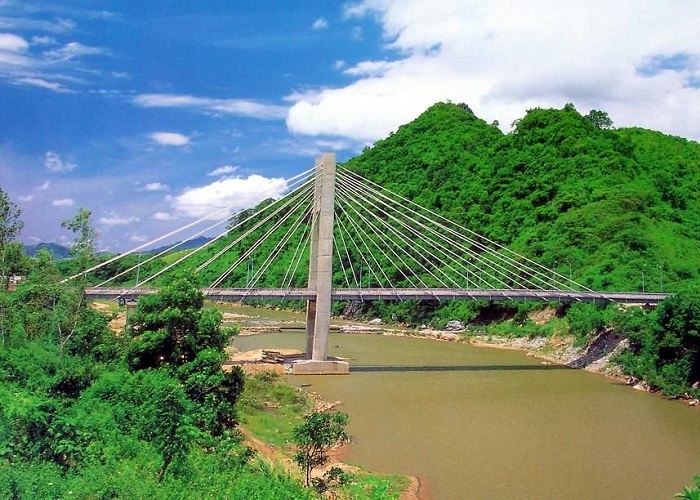
Traveling here, visitors will not only admire the beautiful scenery around the bridge but also have the opportunity to exchange and learn about the culture of the Pa Co and Van Kieu people. They are all resilient people in the struggle against foreign invaders and have many unique cultural features.
Rockpile Hill
Rockpile Hill, which is also known as Mot Mountain by the locals, is a rocky mountain located near Thuong Lam Village in Cam Thanh Commune, Cam Lo District, Quang Tri Province. During the Vietnam War, the US military utilized this mountain as a watchtower to observe the activities of the Vietnam People's Army in the demilitarized zone in Quang Tri from 1966 to 1968. Rockpile Hill is situated on Route 9, approximately 29 km west of Dong Ha, 20 km east of Dakrong Bridge, and about 18 km as the crow flies from Ben Hai River and Hien Luong Bridge.
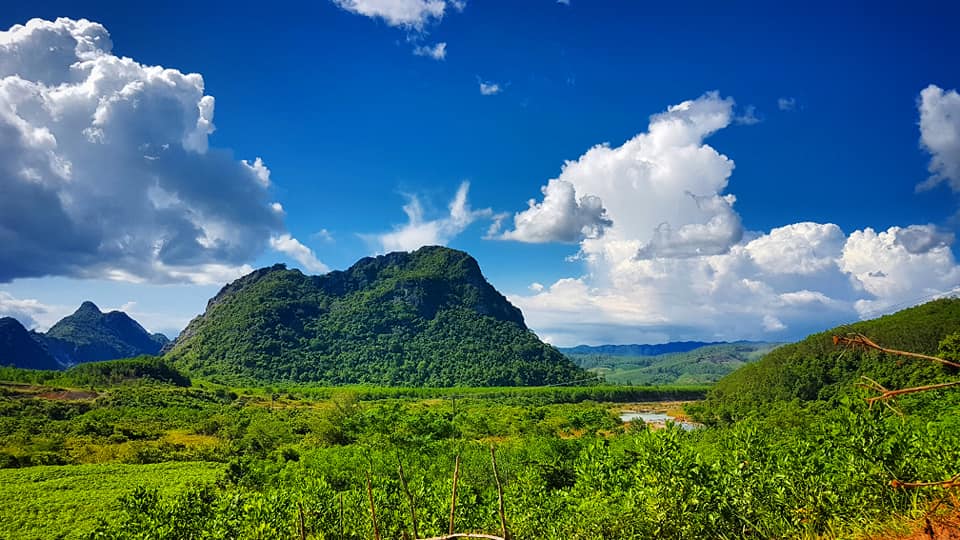
Rockpile Hill, which stands at a height of 230 meters, does not have any roads leading up or down. All of the supplies that are needed on the hill are brought in by helicopters. In fact, American soldiers even use water from helicopters to bathe themselves. The dirty clothes are collected and then shipped to the Philippines for washing.
Rockpile Hill is one of the most important stops on the famous DMZ tourist route in Quang Tri, which attracts many international tourists..
Hien Luong Bridge – Ben Hai River
Hien Luong Bridge - Ben Hai River is located in Vinh Linh District (Vinh Thanh, Vinh Giang, Vinh Son communes, Cua Tung Town) and Gio Linh District (Trung Hai Commune), Quang Tri Province.
Hien Luong - Ben Hai is a place that witnessed the pain of division between two regions and historical events associated with the process of fighting for national liberation and unification of our army and people during the anti-American period. After the signing of the Geneva Accords on July 20, 1954, our country was divided into two regions, North and South, with the 17th parallel (Ben Hai River) serving as the boundary. General elections were scheduled to unify the country in July 1956. However, due to the events caused by the sabotage of hostile forces, it took us 21 years (until 1975) with the blood of soldiers and compatriots to gain independence and unity of the country.
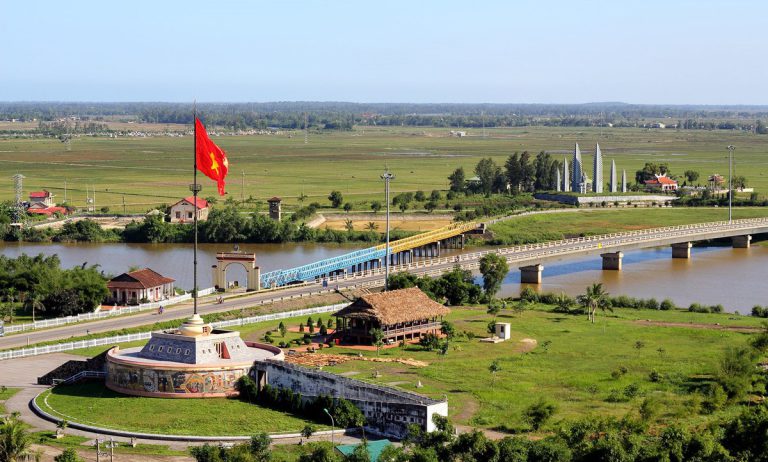
The monument's primary axis runs from North to South, with the historic Hien Luong Bridge at its center. This bridge connects the Northern Flagpole with the "Aspiration for Unification" monument cluster on the Southern bank.
Vinh Moc Tunnels are situated in Vinh Moc Village, Vinh Thach Commune, Vinh Linh District, Quang Tri Province. It was a military-civilian project during the Vietnam War that was constructed by the Democratic Republic of Vietnam to resist attacks from the Republic of Vietnam and the United States of America. The tunnel system was located north of the Ben Hai River and Hien Luong Bridge and was operational from 1965 to 1972.

Vinh Moc Tunnels are part of the tourist attractions in the former demilitarized zone during the Vietnam War, and have been recognized as a Vietnamese historical relic. Vinh Moc Tunnels opened its doors to visitors in 1995 and has since then attracted a large number of visitors.








